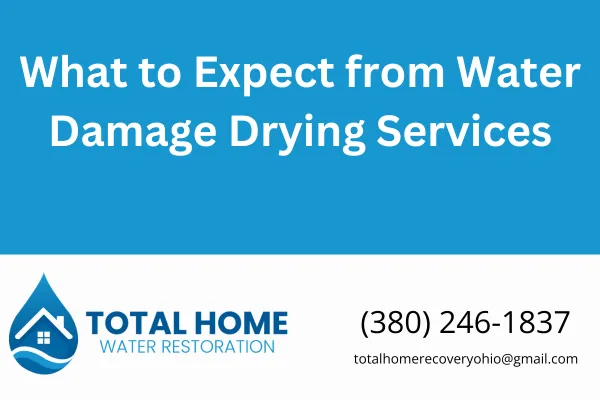
What to Expect from Water Damage Drying Services
What to Expect from Water Damage Drying Services
If you're dealing with water damage in your home—maybe from a burst pipe, backed-up sump pump, or heavy rain—you need to know what comes next. At Total Home Water Restoration, we’ve walked hundreds of homeowners in Grove City and nearby areas through the drying process. Here's what you can expect.
Step 1: Fast Response and Inspection
Water damage gets worse by the hour. That’s why we move quickly. Once you call 380-246-1837, we’ll dispatch a certified technician to assess:
Where the water is coming from
What materials are affected (drywall, subfloors, insulation, etc.)
Moisture levels using thermal imaging and moisture meters
What category of water we’re dealing with (clean, gray, or black)
We follow IICRC S500 standards for water damage restoration to ensure safety and accuracy.
Step 2: Water Extraction
If there’s standing water, we remove it right away using truck-mounted extractors and high-capacity pumps. Quick extraction reduces the chances of:
Mold growth
Structural damage
Ruined insulation and drywall
We’ve seen too many homes in Grove City where delays led to major reconstruction. You don’t want that.
Step 3: Drying and Dehumidification
Here’s where the real drying begins. We use a mix of:
High-velocity air movers to circulate air and speed evaporation
Commercial-grade dehumidifiers (low grain refrigerant or desiccant types)
Drying mats or injectidry systems for hardwood floors and wall cavities
Drying isn’t just about blowing air. We measure and adjust equipment daily to maintain proper humidity, temperature, and vapor pressure—what pros call psychrometrics.
How Long Does Drying Take?
Most jobs take 3–5 days, but that depends on:
How much water soaked in
Material types (plaster takes longer than drywall)
Outdoor humidity and temperature
We monitor moisture levels every day. We don’t guess. We measure.
Step 4: Containment (If Needed)
If the water is contaminated (like from a sump pump or toilet overflow), we’ll set up containment and use HEPA air scrubbers to protect your family from airborne particles.
Any materials that can’t be salvaged—like soggy insulation or delaminated particle board—get removed safely and disposed of per EPA guidelines.
Step 5: Final Inspection and Documentation
Once drying goals are met, we do a final walkthrough and provide:
Moisture reports
Photos of all affected areas
A written summary for your insurance claim
If repairs are needed, we’re licensed to handle everything from drywall replacement to full kitchen remodeling.
FAQs About Water Damage Drying Services
Do I need to leave my home during drying?
Not usually. We’ll walk you through what’s safe and what’s not. If the damage is in critical areas like kitchens or bathrooms, temporary relocation might make sense.
Will my insurance cover this?
Most homeowner’s insurance covers sudden water damage, but not gradual issues or flooding. We’ll work with your adjuster and provide all documentation needed.
What if mold shows up?
We’re certified in mold remediation too, and we always keep an eye out during the drying phase. If mold is present, we follow strict IICRC S520 protocols for removal and clearance testing.
Call Grove City’s Local Drying Experts
At Total Home Water Restoration, we don’t cut corners. We fix water damage like it’s our own home—because that’s how it should be.
📍 4141 Hoover Rd, Grove City, OH 43123
📞 380-246-1837
From Grove City to Hilliard, Westerville to Pickerington—we’ve got your back.
